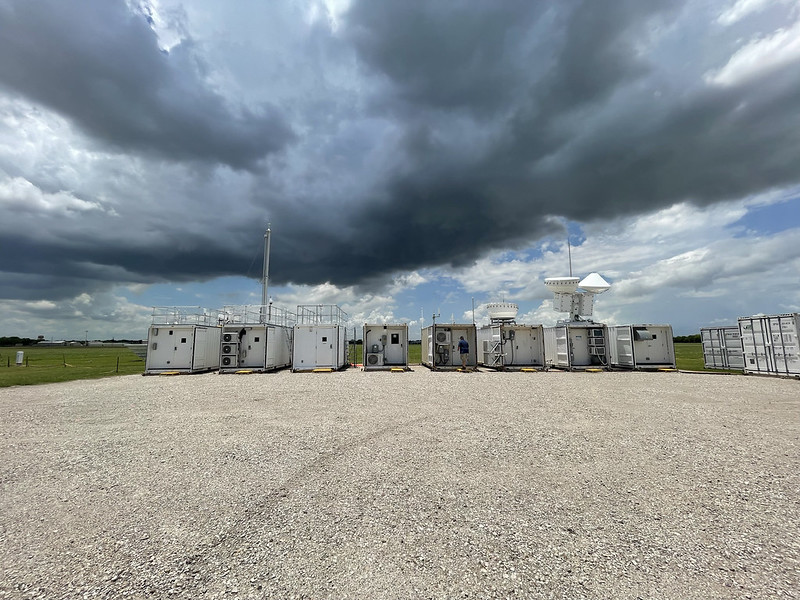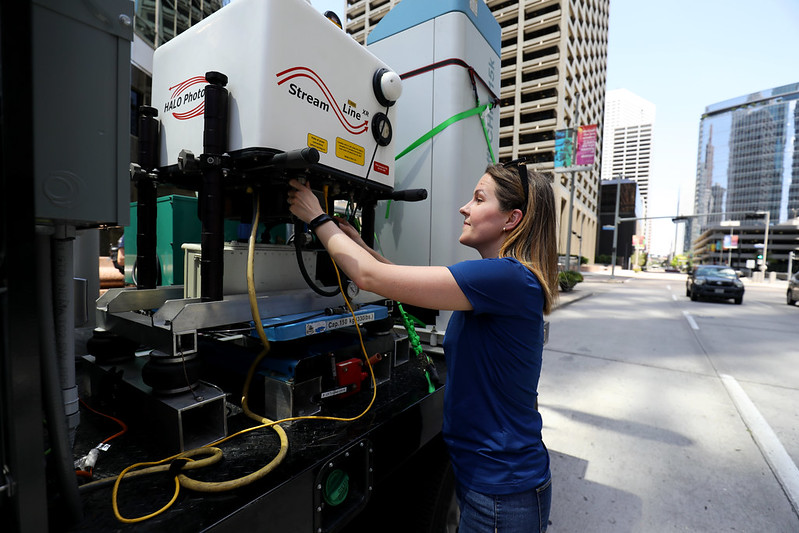BAMS Paper Outlines Early Findings From Southeastern Texas Campaigns
Published: 15 September 2025
Article features ARM’s 2021–2022 TRACER field campaign in the Houston area

To better study the complex interactions of aerosols, convective clouds, and air quality in a coastal urban environment, several agencies launched collaborative field campaigns in southeastern Texas in 2021 and 2022, anchored by the Atmospheric Radiation Measurement (ARM) User Facility’s TRacking Aerosol Convection interactions ExpeRiment (TRACER). Almost 40% of the U.S. population lives in coastal counties, making them important areas to understand.
Data from the southeastern Texas campaigns offer a detailed look at the seasonal cycle of cloud and aerosol properties, meteorological conditions, and radiative fluxes in a region characterized by frequent convective storms. Such storms can have big impacts on energy infrastructure through flooding, lightning, and power line damage.
A new overview paper, published as an early online release by the Bulletin of the American Meteorological Society (BAMS), outlines early findings from TRACER, funded by the U.S. Department of Energy (DOE), and three other campaigns:
- the TRACER-Air Quality (TRACER-AQ) campaign, supported by NASA and the Texas Commission on Environmental Quality
- the Experiment of Sea Breeze Convection, Aerosols, Precipitation and Environment (ESCAPE) and Convective Cloud Urban Boundary Layer Experiment (CUBE), both sponsored by the National Science Foundation.
Led by TRACER Principal Investigator Michael Jensen, a meteorologist at Brookhaven National Laboratory in New York, the paper lists nearly 150 co-authors, showing the wide breadth and collaborative nature of the campaign activities.
Support for this work, in part, came from DOE’s Atmospheric System Research program area.
A Collaborative Effort

The BAMS paper presents overviews of deployment setups, the atmospheric conditions observed, early research findings, and plans for future research activities. This information provides important context for scientists interested in using the data for their own research.
The campaigns, which featured ground-based observation sites, mobile laboratories, and shipborne and aerial instrumentation, coordinated to collect a comprehensive set of aerosol, air quality, and cloud property observations across southeastern Texas over the full seasonal cycle.
Early results in the paper include details on observed new particle formation events, sea breeze circulation, and characterization of the convective updraft life cycle. The authors also noted variability in the lightning characteristics of convective storms, giving them a better understanding of convective storm intensity and evolution.
An ongoing multi-model intercomparison project is using TRACER data from the Houston area to examine the representation of aerosol-convection interactions in high-resolution model simulations and to establish the relative importance of the environmental factors that control the characteristics of convective drafts in nature.
By providing new insights into aerosol and cloud life cycles, urban meteorology, and the influence of coastal circulations on air quality, the data collected during TRACER and the other southeastern Texas campaigns will have important long-term significance for coastal communities.
Keep up with the Atmospheric Observer
Updates on ARM news, events, and opportunities delivered to your inbox
ARM User Profile
ARM welcomes users from all institutions and nations. A free ARM user account is needed to access ARM data.


















